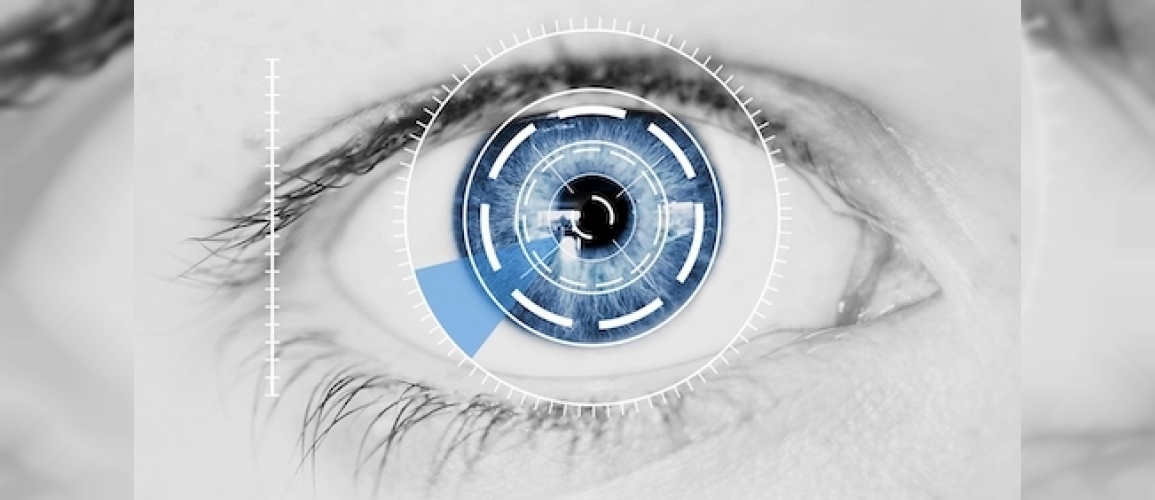Keratoconus is a progressive disease that reduces vision and, if left untreated, can progress to the point of requiring a corneal transplant.
In the fight against the disease, it is necessary to fight these two different conditions. These are,
1. TREATMENTS TO STOP THE PROGRESSION OF THE DISEASE:
Corneal collagen cross-linking (CCL - CROSSLINKING - RAY THERAPY) is known by various names. It is the only treatment method to stop the progression of the disease. Studies have shown that it is 98% successful.
UV rays are used in CCL treatment. With the effect of UV rays on the weakened, loosened, elongated and thinned collagen fibers in the cornea, the collagen fibers are thickened, their length is shortened and new strong bonds are formed between them. The cornea becomes flatter, more resistant and stronger.
CCL treatment is a treatment to stop the disease completely. It does not cause much change in eye numbers. It can flatten the cornea by 1-2 degrees and sometimes cause some improvement in vision levels. However, its main purpose is to stop the disease.
2. TREATMENTS TO IMPROVE VISUAL ACUITY
There are several alternatives to improve vision.
GLASSES : Since the corneal surface is irregular in keratoconus, patients usually cannot see clearly with glasses, but in the early stages, vision can be improved with glasses.
CONTACT LENSES: Today, a wide range of lens options are available for keratoconus patients.
Soft keratoconus lenses,
Rigid, semi-rigid gas permeable lenses,
Hybrid lenses and
A wide variety of lens options are available, including scleral lenses.
CORNEAL RINGS
Corneal Inner Ring Definitely Does Not Stop the Disease.
Corneal inner rings do not have a number resetting effect like laser, the aim is to reduce myopia and astigmatism to tolerable levels and increase the level of vision.
It is based on the principle of creating tunnels with femtosecond laser on both sides of the sharpened, forward curved area in the cornea, placing 2 semicircular rings in these tunnels and flattening the sharp mound in the middle with the stretching effect from the sides like a stretchers and reducing astigmatism and myopia.
In the first stage, it is necessary to prepare tunnels for the rings in the cornea. These tunnels are prepared in 80% depth of the cornea. For this reason, it is critical to open the tunnels with a femtosecond laser called intralase, not with a knife. Tunnels made with a knife in the already thin and loose cornea carry a great risk both in terms of depth and safety.
Ring treatment gives good results in a limited patient group. In patients with myopia below 10.00 D and astigmatism below 8.00 D, corneal thickness is sufficient and steepness values do not exceed 55-56, good results are obtained from ring applications.
If the cornea is very thin, the numbers are above 10.0 D myopia and 8.0 D astigmatism, and the corneal steepness is above 56, no good result can be obtained from the ring.
Intra-corneal rings provide significant correction especially in daytime vision in properly selected patients, but there is some glare effect in night vision.
TOPOLASER TREATMENT: After the disease is stopped with CCL, topography-supported excimer laser treatment is used to correct corneal irregularities and sharpness in the patient with laser and improve vision. It is a highly technological and very special laser treatment that is completely planned according to the patient's corneal map and performed with personalized calculations. It is not possible to apply this treatment with every laser device. The devices that can perform the treatment are limited in number and are new generation devices with advanced technology. However, the patient must have undergone CCL procedure beforehand. Otherwise, excimer laser will trigger the progression of the disease.
INTRAOCULAR LENS (FAKIK ICL - FAKIK TORİK ICL) APPLICATIONS: It is a method of surgically implanting myopic and/or astigmatic lenses into the eye in patients who have undergone CCL and the progression of the disease has stopped, and serious visual improvement can be achieved in appropriate cases.
INTRA-CORNEAL LENTICULE IMPLANTATION: It is a promising method that has been studied in recent years. With the Smile method, the corneal stroma tissue, which we call lenticule tissue taken from the myopic or donor cornea, is frozen and stored and placed in the bed prepared in the diseased thin area in the cornea of the patient with keratoconus, and in addition, CCL treatment is performed and thanks to this lenticule tissue, the patient's cornea is thickened and the pointed area is flattened with the tissue addition and vision improvement can be achieved in patients. This method is a promising development in the treatment of keratoconus.
CORNEA TRANSPLANT : Keratoconus is the disease group in which corneal transplantation is the most successful.
However, it is always essential to try to keep the patient's own cornea in place for as long as possible due to reasons such as rejection of the cornea, even if it is low, since it is taken from the dead and transplanted, or keratoconus on the transplanted cornea, low vision due to high astigmatism due to sutures, suture loosening, infection development.
Today, thanks to advances in corneal transplantation methods, the success of corneal transplants has increased, complications have decreased and graft life has been prolonged thanks to the methods we call lamellar keratoplasty, in which the deep layers of the cornea in the patient are preserved instead of full-thickness corneal transplantation.



